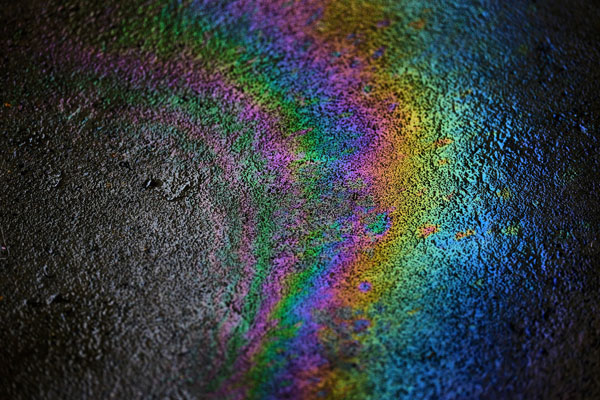
Photo by John Rourke
Aloha Hawaiʻi! You may have seen signs at a gas station near you telling customers to avoid using cell phones and not to smoke, to turn your vehicle off, and wondered why these signs were posted. And what is gasoline or fuel vapor? Or maybe you already know the reason for all these things but would just like a little clarification. Keep reading to learn what gasoline vapor is, why it’s a hazard, how your closest fuel station protects you, and how to protect yourself.

Photo by Skitterphoto
What is Gasoline Vapor?
Naturally, gasoline vapor comes from gasoline. Vapor is a substance produced by some liquids; part of the liquid diffuses into the air, retains some of the properties of the original liquid, and becomes flammable. Gasoline produces vapor at a very low temperature, -40° Fahrenheit, which is known as its flashpoint. It also has a high vapor density, which means it produces a lot of vapor compared to other combustible liquids. Interestingly, only the vapor of a flammable liquid like burns, not the liquid itself.

Photo from Archive
Why is it Dangerous?
Having a low flashpoint and a high vapor density is what makes gasoline such a hazardous liquid. In normal everyday-life circumstances it’s always producing a flammable vapor. This vapor is heavier than the air around it, so if left in an unventilated area, the vapor can collect in low places and cause a fire hazard. A vapor cloud igniting and traveling back to the source is known as flashback, and this has the potential to travel hundreds of feet. Gasoline is a dangerous substance, and one we use almost every day! But don’t worry, there are lots of safety precautions set in place in your car and at fuel stations to protect you, and just a little knowledge of how it works can help you protect yourself.

Photo by Chanikarn Thongsupa
How Your Automaker and Your Gas Station Protect You
Most vehicles in the United States these days are outfitted with an ORVR, which is an Onboard refueling vapor recovery system. This system is designed to prevent gasoline vapors from escaping while you refuel your vehicle, and recirculates them into the engine as fuel. The system includes a variety of valves and lines including your fuel tank to prevent liquid and vapor from escaping during the refueling process. It helps keep you safe and reduces air pollution! On the fuel nozzle itself there are components in place to prevent the escape of liquid and vapor gasoline, valves and overfill detectors. These measures are helpful in keeping you safe, but it’s important for individuals to exercise care to maximize their safety and the safety of those around them.

Photo by Julie B
What You Can do to Exercise Safety While Refueling
It’s easy to be safe when refueling, just follow these simple rules.
- Never top off your vehicle when refueling; the fuel disengages at a set point in order to stop fuel from overflowing and causing a safety hazard, as well as protecting your vehicle’s vapor recovery systems from getting flooded. If those systems get flooded it’s expensive to replace, and spilled gasoline can get on you, your car, and the ground, and create a danger to you and everyone around you. Be safe and don’t risk topping off!
- Follow the signs that say no smoking and to turn off your vehicle. Smoking of course is hot enough to ignite escaped gasoline vapor which could cause a dangerous situation. Turn off your vehicle to avoid static complications.
- Touch a metal piece of your car before you begin to refuel, and before you enter or exit the vehicle. This will discharge any static electricity that might spark and ignite gasoline vapor in the air.

Photo by Heather
That’s it! If you’d like to read more about gasoline spills or how to pump fuel safely, please visit our article on preventing spills at the gas station. Big Island Energy Company in Kailua-Kona and Hilo always makes every effort to ensure your safety and adhere to the industry’s highest safety standards. Mahalo nui loa for reading! Aloha, a hui hou!
ShareSEP

About the Author:
Julie is Big Island Energy's Social Media and SEO Specialist.